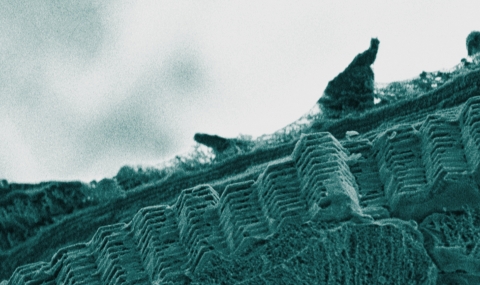 |
Dinoflagellates
|
|
|
Flagellated microalgae represent a major group of plankton. Among these, dinoflagellates with about 2000 living species classified in about 125 genera constitute one of the largest groups More than 10% of the dinoflagellate species produce resting stages, called dinoflagellate cysts or dinocysts, as part of their life cycle. Cysts of several dinoflagellate species exhibit organic walls or calcareous and sometimes even siliceous walls. Neither the detailed structure and function of the cyst wall, nor the processes involved in cyst formation are well understood. Our primary goal is to obtain a detailed understanding of the biomineralization processes present in dinoflagellates during their complex life cycle |

 |
The unique shell microstructure of the pteropods
|
|
|
The shelled pteropods, members of the phylum Mollusca (Gastropoda), are one of the three major planktonic calcifiers in the ocean, and thus have an important role in the marine ecosystem. The shells are composed of aragonite, a form of calcium carbonate, with different microstructures. The Cavoliniidae have a unique, still not well understood microstructure composed of interweaving curved elements, which is unlike that of any other mollusc group. We study the shell microstructure mainly by FIB-SEM serial surface view (SSV) that allows generating a 3D reconstruction of the shell including the organic matrix net and the mineral embedded into it.We also use calcein staining and high resolution Cryo-Correlative Light Electron Microscopy (CLEM) to understand the formation pathways of the shell. |



